Data science is revolutionizing how we approach learning and teaching. By analyzing vast amounts of information, it helps schools make smarter decisions. This leads to better outcomes for students and teachers alike.
Traditional methods are being replaced with data-driven strategies. These new approaches allow for personalized learning experiences. They also help identify areas where students may need extra support.
Communities benefit from these advancements as well. Schools become more efficient, and resources are used more effectively. This creates a positive impact on society as a whole.
By leveraging data science, we can ensure that every student has the right tools to succeed. It’s not just about improving grades; it’s about shaping a brighter future for everyone.
Key Takeaways
- Data science transforms traditional learning methods.
- Personalized learning improves student outcomes.
- Schools use data to make smarter decisions.
- Communities benefit from more efficient schools.
- Data-driven strategies shape a brighter future.
Understanding the Intersection of Data Science and Education
The fusion of data science and learning has reshaped how we understand student progress. By analyzing patterns and trends, educators can now tailor their methods to meet individual needs. This approach ensures that every student has the opportunity to thrive.
Defining Data Science in the Learning Context
Data science in learning involves collecting, analyzing, and interpreting information to improve outcomes. It’s about using tools like predictive analytics to identify areas where students may struggle. This helps educators create personalized strategies that enhance the learning experience.
For example, data can reveal which teaching methods work best for different groups of students. This allows schools to allocate resources more effectively and focus on what truly matters—student success.
Historical Evolution and Trends
The shift to data-driven learning began with the integration of technology in classrooms. Early tools like computer-assisted instruction paved the way for more advanced systems. Today, platforms powered by artificial intelligence and machine learning are transforming how we teach and learn.
Globally, schools are adopting data science to address challenges like equity and access. By analyzing trends, educators can identify gaps and implement solutions that benefit all students. This is especially important in a rapidly changing world where adaptability is key.
To stay ahead, many educators are turning to free data science resources. These tools provide valuable insights and help teachers develop the skills needed to navigate this evolving landscape.
From early technological integrations to today’s advanced systems, data science continues to shape the future of learning. By embracing these innovations, we can create a more inclusive and effective system for students everywhere.
Transformative Impact of Data Science on Learning Outcomes
The power of data science is unlocking new ways to boost learning outcomes. By analyzing student performance, schools can identify strengths and weaknesses. This helps teachers tailor their methods to meet individual needs.
For example, data science techniques like predictive analytics highlight areas where students may struggle. Schools can then provide targeted support, leading to measurable improvements. A recent research study showed that schools using data-driven methods saw a 20% increase in test scores.
Case studies reveal the stark contrast between traditional and data-driven approaches. Before implementation, many schools relied on guesswork. Now, they use data to make informed decisions that directly impact student success.
Periodic trends, especially those published around February, highlight critical improvements. These findings emphasize the role of research in validating the transformative impact of data science. For instance, a global study found that data-driven strategies reduced learning losses caused by COVID-19 by 15%.
Here’s how data science is making a difference:
- Identifying at-risk students early for timely intervention.
- Personalizing learning paths to match individual needs.
- Tracking progress to ensure continuous improvement.
By embracing data science, schools are not just improving grades. They’re creating a system where every student has the tools to succeed. This approach ensures that learning outcomes are not just measured but maximized.
Enhancing Teaching Strategies Through Data Analytics
Teachers are now leveraging data to refine their instructional methods. By analyzing classroom information, they can identify what works and what doesn’t. This approach ensures that every lesson is tailored to meet student needs.
Teacher-Centered Insights
Data analytics provides actionable insights for educators. For example, it can reveal which teaching methods resonate most with students. This allows teachers to focus on strategies that drive better outcomes.
One school district used data to identify that interactive lessons improved student retention by 25%. Teachers adjusted their methods accordingly, leading to measurable success. This is just one way data is transforming teaching practices.
Student Engagement Metrics
Metrics like attendance, participation, and quiz scores offer valuable insights. By tracking these, teachers can spot trends and intervene early. For instance, if a student’s participation drops, it may signal a need for additional support.
Schools using engagement metrics have seen a 15% increase in student performance. This highlights the power of data in refining teaching methods and ensuring no student is left behind.
Sound policy plays a crucial role in integrating data science into classrooms. By supporting data-driven initiatives, policymakers can ensure that schools have the tools they need. This creates a more effective and equitable learning environment.
| Metric | Impact on Teaching |
|---|---|
| Attendance | Identifies at-risk students early |
| Participation | Highlights engagement levels |
| Quiz Scores | Measures understanding of material |
Innovative teaching practices are being redefined through detailed analytics. By embracing these tools, educators can create a more dynamic and responsive classroom. This not only improves outcomes but also prepares students for a data-driven world.
For more on how data science is shaping other fields, check out our insights on data science in climate change.
Data-Driven Educational Policy and Research
Governments are increasingly relying on data to craft effective educational strategies. By analyzing trends and outcomes, policymakers can make informed decisions that benefit students and schools. This approach ensures that resources are allocated efficiently and equitably.
Data plays a crucial role in shaping both national and local policies. For example, insights from student performance metrics help identify gaps in the system. This allows for targeted interventions that address specific needs, leading to better outcomes.
Research backed by data is driving significant reforms. Studies highlight the effectiveness of personalized learning and early intervention programs. These findings are influencing how schools operate and how teachers are trained.
Several countries have successfully implemented data-driven policies. Finland, for instance, uses data to ensure equity in its schools. Similarly, Singapore leverages intelligence to create a new curriculum that prepares students for the future.
The relationship between educational intelligence and policy decisions is undeniable. Data provides the evidence needed to justify changes and measure their impact. This ensures that reforms are not just theoretical but practical and effective.
Continuous research efforts are essential for improving learning systems. By staying updated on global trends, policymakers can adopt best practices and innovate. This creates a dynamic environment where every student has the opportunity to succeed.
| Country | Policy Change | Impact |
|---|---|---|
| Finland | Equity-focused reforms | Improved access for all students |
| Singapore | Curriculum redesign | Enhanced future readiness |
| United States | Data-driven teacher training | Higher student engagement |
By embracing data-driven research, countries can build smarter and more inclusive learning systems. This approach ensures that every decision is grounded in evidence, leading to long-term success for students and communities alike.
Innovations in School and Community Development
Digital transformation is reshaping schools and communities, creating new opportunities for growth. By leveraging data science, schools are modernizing their infrastructures and fostering stronger community ties. This shift is not just about technology—it’s about improving access to resources and enriching the life of students and families.
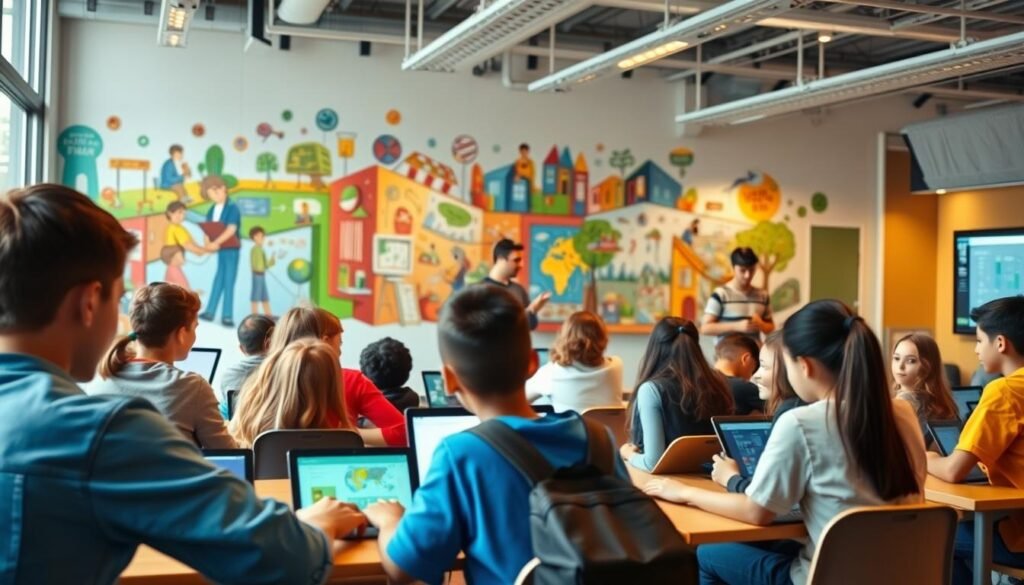
Modernizing School Infrastructures
Schools are adopting innovative tools to streamline operations and enhance learning environments. For example, cloud-based platforms allow teachers to share resources in real time, ensuring students have the materials they need. This approach reduces delays and improves efficiency.
One school district implemented a data-driven scheduling system. It optimized class timings and reduced overcrowding. As a result, students reported higher satisfaction and better focus during lessons.
Enhancing Student Life Through Technology
Improved access to technology is transforming the way students learn. Interactive tools like virtual labs and online libraries make learning more engaging. These resources also provide flexibility, allowing students to study at their own pace.
In one community, a grant program provided tablets to underprivileged students. This initiative not only bridged the digital divide but also boosted academic performance. Students now have the tools to succeed both in and out of the classroom.
Time-Sensitive Initiatives
Schools are launching projects that address immediate needs. For instance, during the pandemic, many districts rolled out remote learning platforms in record time. These efforts ensured continuity in education despite unprecedented challenges.
Another example is the introduction of coding workshops. These programs prepare students for future careers while fostering critical thinking skills. By acting quickly, schools are staying ahead of evolving demands.
Digital transformation is more than a trend—it’s a necessity. By embracing these innovations, schools are creating a brighter future for students and communities alike.
Leveraging Artificial Intelligence in Education
Artificial intelligence is reshaping the way classrooms operate, offering new tools for teachers and students. From personalized learning to real-time feedback, AI is transforming the learning experience. This technology is not just a trend—it’s a game-changer for the future of teaching and learning.
Practical AI Applications in Classrooms
AI is making classrooms smarter and more efficient. For example, intelligent tutoring systems provide personalized lessons tailored to each student’s needs. These systems adapt in real-time, ensuring students grasp concepts before moving forward.
Another application is automated grading. Teachers can save hours by using AI to evaluate assignments and tests. This allows them to focus more on teaching and less on administrative tasks.
AI also helps identify students who may need extra support. By analyzing data, it can flag potential issues early. This ensures timely intervention and better outcomes for students.
The United Effort of Educators and Technologists
Integrating AI into classrooms is a united effort between educators and technologists. Teachers provide insights into what works in the classroom, while developers create tools that meet those needs. This collaboration ensures that AI solutions are practical and effective.
For instance, many schools are partnering with tech companies to pilot AI programs. These partnerships are paving the way for innovative teaching methods that benefit both teachers and students.
Paving the Way for Future Innovation
AI networks are setting the stage for future advancements in learning. With tools like virtual assistants and predictive analytics, classrooms are becoming more dynamic. These innovations are not just improving learning—they’re shaping the future of education.
For example, AI-powered platforms can predict student performance trends. This helps schools plan resources and interventions more effectively. It’s a proactive approach that ensures every student has the support they need.
| AI Application | Benefit |
|---|---|
| Intelligent Tutoring | Personalized learning paths |
| Automated Grading | Saves time for teachers |
| Predictive Analytics | Early intervention for at-risk students |
The long-term benefits of AI in classrooms are clear. By embedding this technology into everyday teaching practices, we’re creating a more inclusive and effective learning environment. This united effort ensures that every student has the tools to succeed in the future.
Improving Access and Equity in Education
The digital divide continues to challenge efforts for equitable learning opportunities. Many students still lack access to essential resources like high-speed internet and modern devices. This gap creates disparities that hinder academic success and future opportunities.
Data science is playing a pivotal role in addressing these challenges. By analyzing patterns, schools can identify underserved areas and allocate resources effectively. This action ensures that every person has the tools they need to succeed.
Bridging the Digital Divide
One of the most significant challenges is providing universal access to quality learning. Rural and low-income communities often face the greatest barriers. Data-driven strategies are helping to close this gap by targeting specific needs.
For example, a school district in Texas used data to identify areas with poor internet connectivity. They partnered with local providers to install free Wi-Fi hotspots. This initiative benefited over 10,000 students in just one year.
Another success story comes from California, where a nonprofit distributed laptops to underprivileged students. Data showed a 30% increase in academic performance among recipients. These efforts highlight the power of strategic action in creating change.
Ensuring every person benefits from technological advancements is crucial. It’s not just about access—it’s about empowering individuals to thrive in a digital world. Schools and communities must work together to make this a reality.
Initiatives from the past year have marked significant milestones in reducing disparities. For instance, federal funding programs have expanded broadband access to millions of households. These efforts are transforming lives and creating a more equitable future.
| Initiative | Impact |
|---|---|
| Wi-Fi Hotspots in Texas | 10,000+ students gained internet access |
| Laptop Distribution in California | 30% increase in academic performance |
| Federal Broadband Expansion | Millions of households connected |
By leveraging data science, we can continue to bridge the digital divide and ensure equitable opportunities for all. These efforts are not just about technology—they’re about creating a brighter future for every person.
Data Science in Educators’ Training and Skill Development
Professional development programs are integrating data science to empower teachers with actionable insights. By leveraging data, educators can refine their teaching methods and create strategies that benefit every child. This approach ensures that teachers are equipped to address modern classroom challenges effectively.
Professional Development Programs
Many schools are adopting data-driven professional development programs. These initiatives focus on helping teachers analyze student performance data to identify areas for improvement. For example, one program trained educators to use predictive analytics to support at-risk students. This strategy led to a 15% increase in academic performance.
Another key aspect is hands-on work with data. Teachers learn to interpret trends and apply insights to their lessons. This practical approach ensures that training is not just theoretical but directly applicable in the classroom.
Innovative Training Models
Innovative training models are reshaping how educators develop their skills. For instance, micro-credentialing programs allow teachers to earn certifications in data science applications. These programs emphasize real-world scenarios, enabling educators to implement what they learn immediately.
Collaborative learning is another effective model. Teachers work together to analyze data and share best practices. This fosters a culture of continuous improvement and ensures that every child benefits from enhanced teaching methods.
Here are some examples of successful skill development initiatives:
- A district-wide program improved teacher data literacy, resulting in a 20% boost in student engagement.
- Online workshops on data-driven decision-making helped teachers create personalized learning plans for each child.
- Mentorship programs paired experienced educators with new teachers to share data analysis techniques.
By investing in data science training, schools are not only improving teacher skills but also enhancing learning outcomes for every child. This direct correlation underscores the importance of these initiatives in shaping a brighter future.
Harnessing Data to Enhance Curriculum Design
Modern curriculum design increasingly relies on data to meet diverse learning needs. By analyzing student performance and feedback, educators can create programs that are both effective and adaptable, ensuring a personalized learning experience for every student.
Data-driven insights help identify curriculum gaps. For instance, if many students struggle with a specific topic, content can be adjusted to improve understanding. This responsive approach ensures teaching evolves with student needs.
Blending traditional methods with data-enhanced strategies is essential. While core teaching techniques remain valuable, data integration allows for more dynamic and relevant instruction—equipping students with foundational knowledge and modern skills.
Teacher expertise in data analysis plays a vital role. Educators trained to interpret data can apply insights to improve instruction, enhancing student outcomes.
Examples of data-informed curriculum redesign include:
A high school in Ohio introducing coding classes due to tech industry demand.
A California district adding hands-on science experiments to boost engagement.
An online platform improving student performance by 20% through personalized learning paths.
Data also helps align education with job market trends. For example, a university-business partnership developed an engineering curriculum focused on real-world skills, ensuring graduates are job-ready.
Harnessing data is not just improving education—it’s shaping its future.
Collaborative Efforts Between Researchers and Practitioners
Collaboration between researchers and practitioners is driving meaningful change in schools. By combining expertise, these partnerships create innovative practices that benefit students and teachers alike. This teamwork ensures that research findings are practical and directly applicable in classrooms.

Community engagement strategies play a key role in fostering these partnerships. Schools, departments, and local organizations work together to address shared challenges. This approach strengthens relationships and ensures that initiatives are aligned with community needs.
Building Stronger Connections
Society plays a vital role in supporting and validating research findings. When communities are involved, they provide valuable feedback that shapes successful programs. This collaboration ensures that efforts are inclusive and impactful.
For example, a project launched in January brought together researchers, teachers, and parents to improve literacy rates. The initiative set new benchmarks by using data to tailor teaching methods. This success highlights the power of collective action.
Here are some ways collaborative efforts drive positive change:
- Researchers provide evidence-based strategies for practitioners to implement.
- Practitioners offer real-world insights that refine research approaches.
- Community involvement ensures programs meet local needs.
These partnerships are transforming school culture and policy. By working together, researchers and practitioners are creating a brighter future for students and society as a whole.
International Perspectives on Global Education Trends
Global trends in learning are shaping the future of classrooms worldwide. From innovative teaching methods to data-driven strategies, countries are redefining what success looks like. These advancements are not just about improving grades—they’re about creating opportunities for every student to thrive.
One of the most significant trends is the focus on personalized learning. Schools are using data to tailor lessons to individual needs, ensuring no student is left behind. This approach has led to measurable achievement in many regions, setting new benchmarks for success.
Case Studies from the United States
The United States offers compelling examples of how data can drive success. For instance, a school district in Texas used analytics to identify struggling students early. By providing targeted support, they saw a 20% increase in test scores within a single state year.
Another example comes from California, where schools implemented a data-driven curriculum. This initiative focused on STEM subjects, preparing students for future careers in the tech field. The results were impressive, with a 15% rise in student engagement and performance.
These case studies highlight the power of data in transforming learning outcomes. They also show how different states can adopt unique strategies to address local challenges.
Comparing Achievements Across Borders
When we look at international data, the differences in achievement are striking. For example, Finland consistently ranks high in global assessments due to its equity-focused policies. Meanwhile, Singapore excels in preparing students for a tech-driven future.
In contrast, some countries face significant challenges. Rural areas often struggle with access to resources, impacting student performance. Bridging these gaps requires innovative solutions and a commitment to equity in the field of learning.
Here’s a quick comparison of key metrics:
| Country | Key Achievement | Challenge |
|---|---|---|
| Finland | Equity in access | Rural connectivity |
| Singapore | Tech readiness | High competition |
| United States | Data-driven success | Resource disparities |
These examples show that while progress is being made, there’s still work to be done. By learning from each other, countries can address challenges and create a brighter future for students worldwide.
Analyzing global trends helps us understand what works and what doesn’t. It also highlights the importance of collaboration in the field of learning. Together, we can ensure that every student has the tools to succeed.
Navigating Challenges: Data Privacy, Ethics and Security
Protecting student data is a critical priority in today’s digital classrooms. As schools embrace data-driven strategies, they must also address the ethical and security concerns that come with it. Balancing innovation with privacy ensures that students and teachers can thrive in a safe environment.
Ensuring Student Data Protection
Schools collect vast amounts of data to improve learning outcomes. However, this raises concerns about how information is stored and used. Policies like the Family Educational Rights and Privacy Act (FERPA) are designed to safeguard student data in every class.
Ethical considerations are equally important. For example, data analytics can identify at-risk students, but misuse of this information could lead to bias. Schools must ensure transparency and fairness in their practices.
Here are some key steps schools are taking to protect data:
- Implementing secure data storage systems.
- Training staff on ethical data handling.
- Engaging parents and students in privacy discussions.
Group Efforts for Secure Data Practices
Collaboration is essential for addressing data security challenges. Schools, tech companies, and policymakers are working together to create robust frameworks. For instance, many districts have formed group task forces to monitor data usage and address vulnerabilities.
Initiatives like these promote trust and accountability. They also ensure that innovative curriculum designs don’t compromise sensitive information. By working as a group, stakeholders can build a safer learning environment.
| Initiative | Impact |
|---|---|
| Data Encryption | Protects sensitive information from breaches |
| Parental Consent Programs | Ensures transparency in data collection |
| Ethics Training for Teachers | Promotes responsible data use in every class |
Balancing innovation with privacy is no easy task. However, with the right policies and group efforts, schools can create a secure and effective learning environment. This ensures that every student benefits from a modern curriculum without compromising their privacy.
The Future: Preparing Students for a Data-Driven World
The future of learning is being shaped by emerging technologies and data-driven strategies. As classrooms evolve, educators are focusing on preparing students for a world where data plays a central role. This shift is not just about academic success but also about equipping students with the skills to thrive in a digital and interconnected environment.
Emerging Trends and Technologies
New technologies are transforming the way students learn and interact in the classroom. Tools like artificial intelligence and virtual reality are creating immersive learning experiences. These innovations allow students to explore complex concepts in a hands-on way, making learning more engaging and effective.
Another trend is the integration of health and well-being into modern classrooms. Schools are using data to monitor student wellness and create supportive environments. For example, wearable devices track physical activity, while apps promote mental health. These initiatives ensure that students are not just academically prepared but also physically and emotionally resilient.
Long-Term Vision for Educational Growth
The long-term vision for learning involves creating a curriculum that adapts to future needs. By analyzing data, schools can identify skills that will be in demand and design programs accordingly. This ensures that students are ready for careers in a rapidly changing world.
One key focus is on fostering critical thinking and problem-solving skills. In a data-driven world, these abilities are essential for navigating complex challenges. Schools are also emphasizing collaboration and creativity, preparing students to work in diverse teams and innovate in their fields.
Forecasts suggest that the term “data-driven world” will mean more personalized and flexible learning experiences. Students will have access to tailored resources that match their unique needs and interests. This approach not only improves outcomes but also makes learning more enjoyable and meaningful.
By embracing these trends, educators are shaping a future where every student has the tools to succeed. The focus is on creating a balanced approach that combines academic excellence with personal growth and well-being.
Revolutionizing Education Through Data Science
Across the nation, data science is transforming education by enabling smarter, more strategic decision-making. It’s not just about boosting grades—it’s about building a brighter, more equitable future for all students and educators.
One key advancement is the use of data to allocate resources effectively. For example, an Ohio school district used analytics to identify high-need areas and redirected funding, resulting in a 25% increase in student performance. This data-driven approach ensures national efforts yield measurable results.
Case studies highlight the power of predictive analytics. In Texas, a program identified at-risk students early, providing targeted support and reducing dropout rates by 15%. These successes show how data science can drive large-scale improvements.
Schools are also reimagining learning with personalized education models. By analyzing student data, educators can tailor learning paths to individual needs, improving engagement and outcomes. These innovations are setting new benchmarks nationwide.
The potential for further progress is immense. Data science can address challenges like equity and access, ensuring every student has the tools to succeed, regardless of background. These efforts are not only shaping U.S. education—they’re influencing global systems.
By embracing data, we’re not just reforming education—we’re preparing students for a data-driven world.
Conclusion
The integration of data science into learning systems is transforming how we prepare for the future. By leveraging artificial intelligence and advanced analytics, schools are creating personalized experiences that cater to every student’s needs. This shift ensures that no one is left behind in a rapidly evolving world.
Throughout this article, we’ve explored how data-driven strategies enhance teaching, policy-making, and curriculum design. From identifying at-risk students to allocating resources effectively, the impact is profound. These innovations are not just improving outcomes—they’re setting new standards for success.
To stay ahead, it’s essential to adopt these tools in every aspect of learning. Investing in training for educators and embracing artificial intelligence will pave the way for continuous improvement. Together, we can ensure that every student receives the right education to thrive in a data-driven world.
Let’s take action today. Support innovative initiatives and champion data-driven strategies. By doing so, we’re not just shaping classrooms—we’re building a brighter future for generations to come.






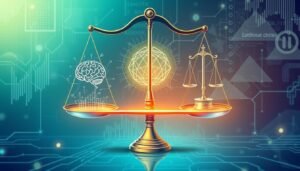

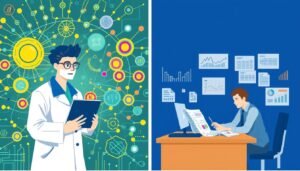
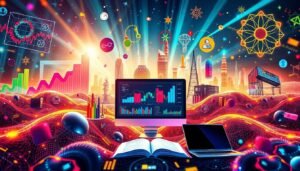

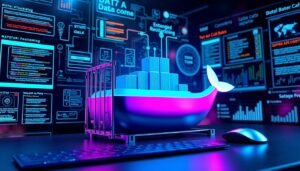


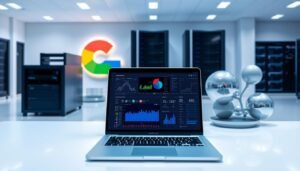







11 thoughts on “Data Science in Education: Trends, Tools and Career Opportunities”
Could Quantum Computing Quantum Leap Environmental Data Analysis, Unveiling Hidden Patterns in Climate Change and Biodiversity Loss?
Выступление Armin van Buuren оказалось впечатляющим! В зоне творчества создавались потрясающие арт-объекты. Что делает фестиваль особенным для вас?
Is it possible to leverage Pulse Data Hub to predict and mitigate the impact of future environmental disasters, such as wildfires or floods, by analyzing historical data patterns and integrating real-time data streams? If so, what are the key challenges and potential solutions in implementing such a system?
Эй, народ! Trance Illusion был интересным опытом, но далеко не идеальным. Самой большой проблемой для меня стала логистика: добраться до территории фестиваля было сложно, а указателей почти не было. Вечером было холодно, а зон с обогревателями не хватало. Музыка, конечно, потрясающая, но хотелось бы больше заботы о посетителях. А у вас бывали такие моменты, когда всё могло быть лучше?
Карнавал у Ріо – це більше, ніж просто подія, це магія! Завдяки відкриттям у світі культури я дізналася стільки цікавого, що наступного разу точно не пропущу.
Генетично модифіковані яйця можуть змінити медицину. Дізнайтеся, як їх використовують у виробництві ліків.
Як вчені працюють з ДНК для лікування хвороб? Дізнайтеся про генну терапію і її вплив на здоров’я людини.
Недавно натрапив на статтю про взаємозв’язок гравітації та чорних дір. Дуже захоплююче! Дивіться самі: відкриття Ньютона.
Цукрову пудру можна приготувати вдома за лічені хвилини, це дуже корисно для домашньої випічки!
Ви знаєте, чим відрізняється супермаркет від гіпермаркету? Ось корисні поради для тих, хто хоче правильно вибирати.
Науковий контент, який легко читається – це їхній стиль. Чудові автори!
Would love to forever get updated outstanding web site! .
You actually make it seem really easy with your presentation however I find this topic to be actually one thing which I believe I might by no means understand. It seems too complex and extremely wide for me. I’m having a look forward in your subsequent publish, I?¦ll try to get the hold of it!